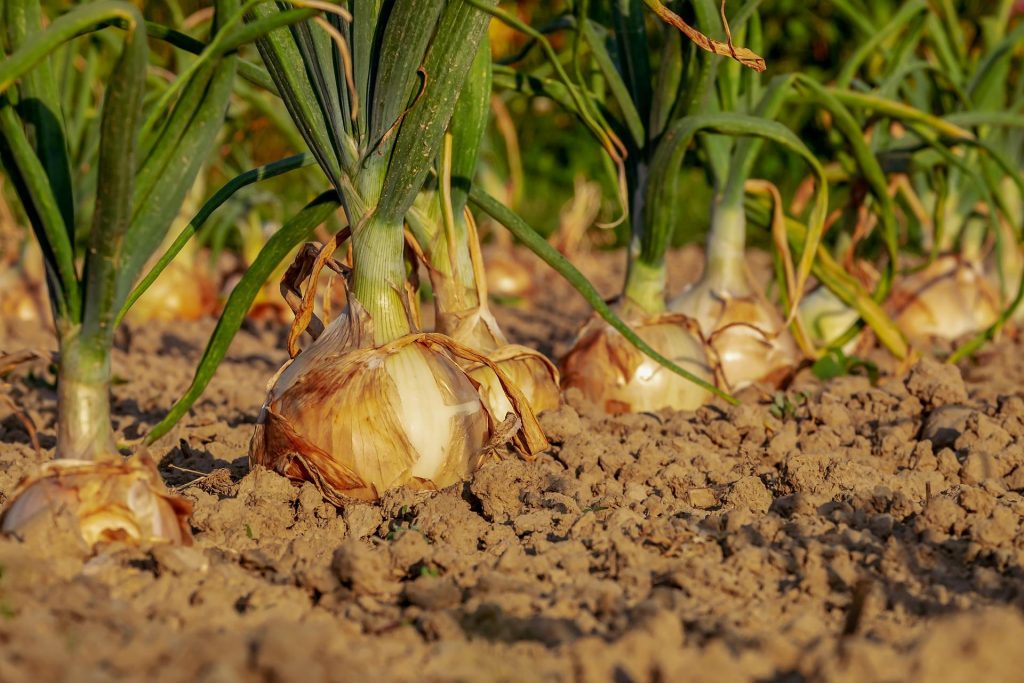
Onion Farming in Kenya
Are you in need of in-depth knowledge on onion and garlic production? If yes, we are a call away. Contact us for: Onion seedlings, Garlic seedlings, Germinated garlic cloves, Farm planning services, Soil testing, training on onion and garlic growing, Drip irrigation installation and maintenance, Agronomic support, Onion and Garlic value pack and Farm management. For free consultation, placing orders or booking a visit with an agronomist, please contact us via Call or what’s app +254703982228, Email: Info@oniondoctor.co.ke. You can also check out our social media handles for daily updates on TikTok: https://www.tiktok.com/@oniondoctorke?_t=ZM-8wmsTu0qumO&_r=1 Instagram: https://www.instagram.com/oniondoctorke?igsh=MTVoaHF3aWUydTJzaQ==Facebook:https://www.facebook.com/share/16SwgYn2dG/ Youtube:https://youtube.com/@oniondoctorke?si=u5Jnd-r0qU9UDYqL and Twitter: https://x.com/OnionDoctorKe?t=FR3JXlS_oN1vjjUgAtfyzg&s=09
Onion farming in Kenya has become a thriving agricultural venture, especially in regions such as Naivasha, Kajiado, Meru, and Oloitoktok. These areas provide ideal conditions for onion growth due to their hot, dry climate. With the increasing demand for onions, prices can reach as high as 100 KSh per kilogram at retail, though wholesale prices (farm gate) typically range between 30 and 40 KSh per kilogram. However, in some instances, farm gate prices can fall to 20 KSh per kilogram, emphasizing the need for market timing. At Onion Doctor, we guide farmers on how to maximize profits by offering expert advice on market research, soil testing, and optimal farming techniques.
Soil Testing: The Foundation for Success
To succeed in onion farming, performing a soil test is crucial. Soil tests help determine:
- Nutrient levels, ensuring you apply only the necessary fertilizers.
- Soil contamination and potential pathogens that can harm onions.
- The soil’s pH levels (ideal for onions: 6–7).
- With Onion Doctor’s soil testing services, farmers save money by avoiding unnecessary fertilizer application and reducing the risk of over-fertilization.
Land Preparation for Onion Farmin
Location and Climate:
Onions thrive in altitudes of 500–2000 meters above sea level and require a rainfall range of 500–700mm annually. Excess rainfall can cause onion bulbs to rot, so it’s essential to control water levels.
Soil:
Onions grow best in well-drained soils with good water-holding capacity. For optimal results, plow the land three weeks before planting, followed by harrowing at least three times to create a fine soil structure. Enrich the soil with 40 tonnes of organic manure per hectare, or use organic fertilizers like Safi Sarvi if manure is unavailable. Safi Sarvi is an excellent choice for acidic soils, offering higher yields and income potential.
Onion Propagation and Planting
Choosing the right seed variety is key to success. Before planting, test the germination rate of your seeds to ensure they are viable. A germination rate of 70% or higher indicates that the seeds are suitable for planting.
Nursery Management:
To reduce soil-borne diseases, solarize the nursery bed during the hottest part of the day. Ensure that the nursery site is free of debris, has a gentle slope for proper drainage, and is located near a water source. For a one-hectare onion farm, allocate 0.05 hectares for seedling propagation.
Seedling Care:
Mulching and weeding are essential to protect young onion seedlings. Avoid flat beds as they may lead to seed washout. Use raised beds and treat the seeds before planting to improve germination rates.
Best Fertilizer for Onion Farming
Onion Doctor recommends using fertilizers tailored to meet onions’ specific nutrient requirements:
- Nitrogen: Boosts growth but should not be over-applied to avoid excessive foliar growth at the expense of bulb size.
- Potassium: Improves onion shelf life and compensates for excess nitrogen.
- Sulfur: Enhances nitrogen uptake and overall yield.
- Magnesium: Crucial for chlorophyll production, nutrient uptake, and onion longevity.
- Boron: Aids in calcium movement and carbohydrate metabolism, boosting bulb size and storage quality.
- Calcium: Increases plant height, boosts immunity, and protects against diseases in infected soils.
Onion Varieties for Kenyan Farmers
Selecting the right onion variety is crucial to your farming success. Onion Doctor recommends the following varieties for Kenyan farmers:
- Red Creole Onion
- Ideal Climate: Hot, low-rainfall regions.
- Yield Potential: 15–18 tonnes per acre.
- Benefits: Long shelf life, pink rot resistance, and a pungent taste.
- Red Couch F1
- Yield Potential: 15–18 tonnes per acre.
- Ideal for: Hotel and catering industries.
- Maturity: 80–90 days.
- Benefits: Large, globe-shaped bulbs; pink rot resistance.
- Texas Early Grano
- Color: White-gold with mild pungency.
- Maturity: 120 days.
- Benefit: Preferred for its mild flavor but should not be planted in pink rot-infected soils.
- Red Pinoy
- Yield Potential: 10–18 tonnes per acre.
- Shelf Life: Six months.
- Benefits: Purple blotch and downy mildew resistance, making it suitable for export.
- Red Passion F1
- Maturity: 90 days.
- Benefits: Resistant to purple blotch and pink rot, excellent storage capabilities.
Common Onion Diseases and Their Control
Purple Blotch Disease
A common issue in Kenyan onion farms, Purple Blotch starts as small, watery lesions that turn brownish-purple. The disease spreads through infected plant debris and thrives in wet conditions. To control it:
- Use Purple Blotch-resistant varieties.
- Avoid excessive irrigation and ensure proper air circulation.
Pink Root Disease
Characterized by nutrient deficiency and light pink roots, Pink Root can remain in the soil as dormant spores. Control this disease by using pink root-resistant varieties and practicing crop rotation every four years.
Bacterial Soft Rot
This disease causes leaves to wilt and scales to become soft and watery. Proper farm hygiene and avoiding excess moisture are crucial for controlling bacterial soft rot.
Onion Doctor: Your Onion Farming Partner
At Onion Doctor, we provide comprehensive solutions to help Kenyan farmers succeed in onion farming. From selecting the right seed variety to disease management, Onion Doctor ensures your farm thrives. Whether you’re farming for local markets or export, we support you with expert advice, soil testing, drip irrigation systems, and high-quality seedlings.
Pingback: Onion Farming in Kajiado: Essential Tips for High Yields
Yes we are open and ready to serve you.